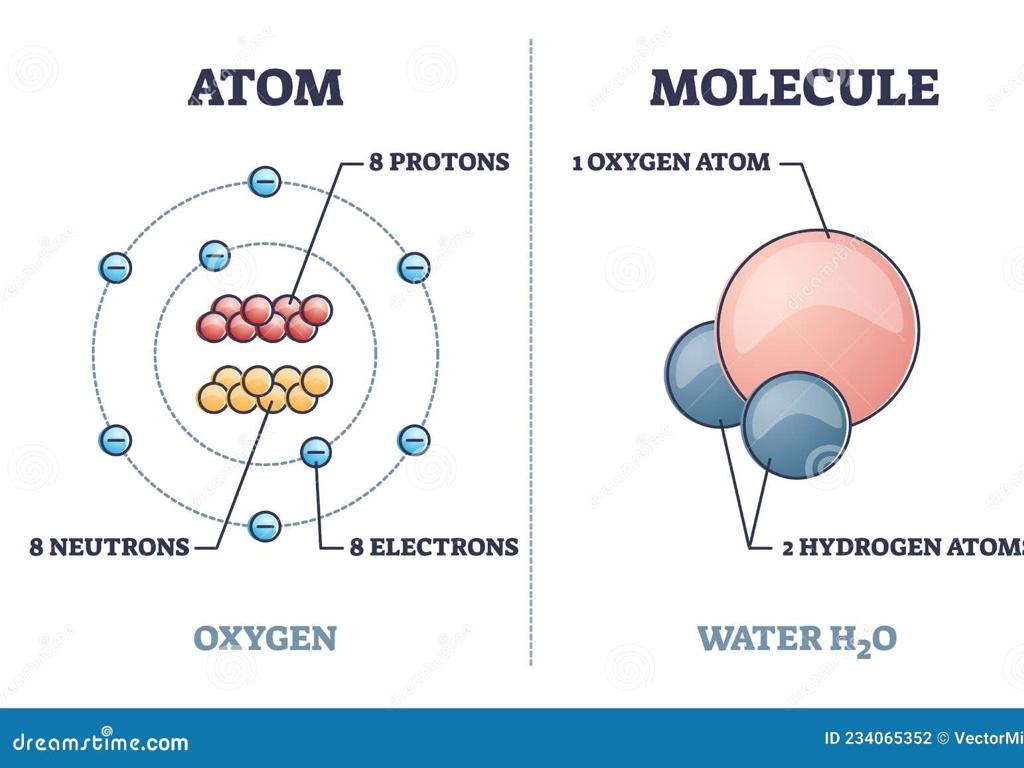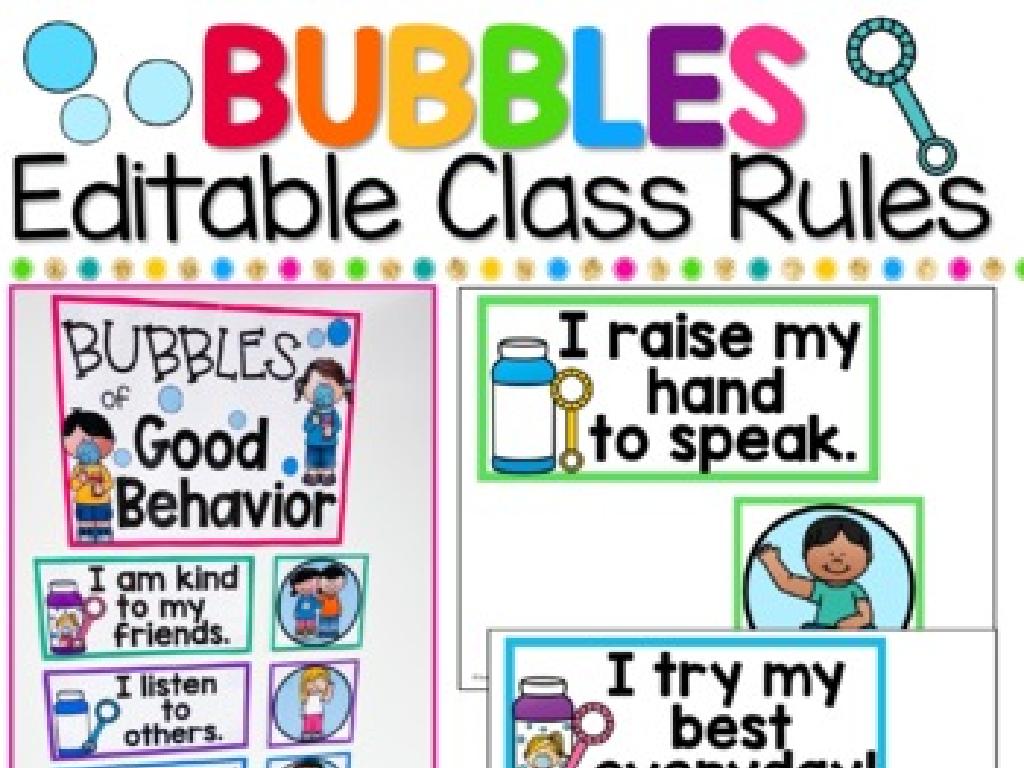To Be: Use The Correct Form
Subject: Language arts
Grade: Third grade
Topic: Verb Tense
Please LOG IN to download the presentation. Access is available to registered users only.
View More Content
Mastering ‘To Be’ Verbs
– ‘To be’ verbs introduction
– Using ‘am’, ‘is’, and ‘are’
– ‘Am’ is for I, ‘is’ for he, she, it, ‘are’ for you, we, they
– Examples in sentences
– I am happy. She is reading. They are playing.
– Practice time!
|
This slide introduces the concept of ‘To be’ verbs to the students, which are foundational in constructing sentences. It’s crucial for the students to understand the correct usage of ‘am’, ‘is’, and ‘are’ to convey present tense. ‘Am’ is used with ‘I’, ‘is’ is used with singular third-person subjects (he, she, it), and ‘are’ is used with plural subjects and with ‘you’. Provide clear examples to illustrate the use of each verb form. After explaining, engage the students with practice exercises where they fill in blanks with the correct form of ‘To be’ verbs. This will help reinforce their understanding and ensure they can apply the concept in their writing and speaking.
Understanding the Verb ‘To Be’
– What is a verb?
– A verb is a word for an action or doing something.
– ‘To be’ is a unique verb
– Unlike other verbs, ‘to be’ doesn’t show action.
– ‘To be’ shows a state of being
– It tells us what someone or something is like.
– Examples of ‘to be’
– ‘I am happy’, ‘She is a teacher’, ‘They are tall’
|
This slide introduces the concept of verbs to the students, focusing on the verb ‘to be’. Begin by explaining that verbs are words that describe actions, like ‘run’, ‘jump’, and ‘eat’. Then, highlight that ‘to be’ is different because it doesn’t describe an action but rather a state of being or condition. Use simple examples to show how ‘to be’ works in sentences, such as ‘I am a student’, ‘You are kind’, or ‘It is cold outside’. Encourage students to think of ‘to be’ as a linking verb that connects the subject of a sentence to more information about the subject. This foundational understanding will help them grasp more complex grammar concepts in the future.
Using ‘To Be’ Correctly
– ‘To be’: ‘am’, ‘is’, ‘are’
– Forms of ‘to be’ show existence or state
– ‘Am’ pairs with ‘I’
– Example: I am happy.
– ‘Is’ goes with ‘he’, ‘she’, ‘it’
– Example: She is a teacher. It is a cat.
– ‘Are’ is used with ‘you’, ‘we’, ‘they’
– Example: You are friends. We are students.
|
This slide introduces the basic forms of the verb ‘to be’ which are fundamental in constructing sentences. Emphasize the correct usage of ‘am’, ‘is’, and ‘are’ with their respective pronouns. Provide examples for each to solidify understanding. Encourage students to create sentences using each form. For instance, ‘I am excited for the trip’, ‘He is my brother’, ‘They are in the garden’. Reinforce the concept by having students correct sentences with the wrong form of ‘to be’. This will help them grasp the concept in a practical and engaging way.
Using ‘Am’ with ‘I’
– Use ‘am’ with ‘I’
– ‘Am’ shows what’s happening now
– It’s used for actions in the present
– Example: I am happy
– Expresses a current state of being
– Example: I am a student
– Describes your current role or job
|
This slide is focused on teaching students the correct use of the verb ‘am’ in present tense sentences. ‘Am’ is always used with the pronoun ‘I’ to describe a current state of being, action, or role. It’s important for students to understand that ‘am’ is only used with ‘I’ and not with other subjects. Provide examples like ‘I am happy’ or ‘I am a student’ to illustrate its use. Encourage students to come up with their own sentences using ‘I am’ to describe their feelings or what they are doing. This will help them grasp the concept of present tense and the correct form of ‘to be’ with the subject ‘I’.
Using ‘Is’ in Sentences
– ‘Is’ for one person, animal, or thing
– Use ‘is’ when the subject of the sentence is singular.
– Example: ‘He is my friend’
– Shows a single boy and we call him a friend.
– Example: ‘The cat is cute’
– Describes one adorable cat.
|
This slide is focused on teaching students the correct use of the verb ‘is’ in sentences. ‘Is’ is used when the subject is singular, meaning there is only one. For example, when talking about a single person like a friend, we say ‘He is my friend,’ not ‘He are my friends.’ Similarly, for a single animal or thing, we use ‘is’ to describe it, such as ‘The cat is cute.’ It’s important to emphasize the singularity of the subject. During the lesson, provide additional examples and ask students to create sentences using ‘is’ with singular subjects to reinforce the concept.
Using ‘Are’ in Sentences
– ‘Are’ with multiple people or things
– Use ‘are’ for more than one person or item
– Example: ‘We are in third grade’
– Example: ‘The apples are red’
|
This slide focuses on the use of the verb ‘are,’ which is a form of the verb ‘to be.’ It is important for students to understand that ‘are’ is used when referring to multiple people or things, indicating a plural subject. Provide examples such as ‘We are in third grade’ to show usage with people, and ‘The apples are red’ to show usage with things. Encourage students to come up with their own examples in pairs or groups, and to share them with the class to reinforce their understanding. This exercise will help them grasp the concept of subject-verb agreement in the present tense for plural nouns.
Let’s Practice Using ‘To Be’!
– Fill in the blank: I ___ happy
– Use ‘am’ for ‘I’: I am happy
– Fill in the blank: She ___ my teacher
– Use ‘is’ for ‘She’: She is my teacher
– Fill in the blank: We ___ friends
– Use ‘are’ for ‘We’: We are friends
|
This slide is an interactive class activity designed to help students practice the correct forms of the verb ‘to be’. The students will fill in the blanks with ‘am’, ‘is’, or ‘are’ depending on the subject of the sentence. ‘Am’ is used with ‘I’, ‘is’ is used with singular subjects like ‘she’, ‘he’, or ‘it’, and ‘are’ is used with plural subjects like ‘we’, ‘they’, or when you’re talking directly to someone. Encourage the students to say the sentences out loud to help them remember the correct form. After completing the activity, ask the students to create their own sentences using ‘am’, ‘is’, and ‘are’ to reinforce their understanding.
Class Activity: Verb Charades
– Understand ‘to be’ verbs
– Act out sentences with ‘to be’
– Use actions to show ‘I am’, ‘He/She/It is’, ‘They are’
– Class guesses with ‘am’, ‘is’, ‘are’
– Guess which form of ‘to be’ fits the acted sentence
– Reinforce correct verb usage
|
This activity is designed to help students understand and practice the correct forms of the verb ‘to be’. Students will take turns acting out sentences that they come up with, which contain a form of the verb ‘to be’. The rest of the class will guess the correct form – ‘am’, ‘is’, or ‘are’. For example, a student might act out ‘I am eating’, and the class would guess ‘am’. This interactive game will help students learn to use these verbs in a fun and engaging way. Prepare a list of sample sentences for students who might have difficulty coming up with their own. Encourage participation and ensure that each student has a chance to act out a sentence. Praise correct guesses and gently correct any mistakes, reinforcing the rules for using ‘am’, ‘is’, and ‘are’.






